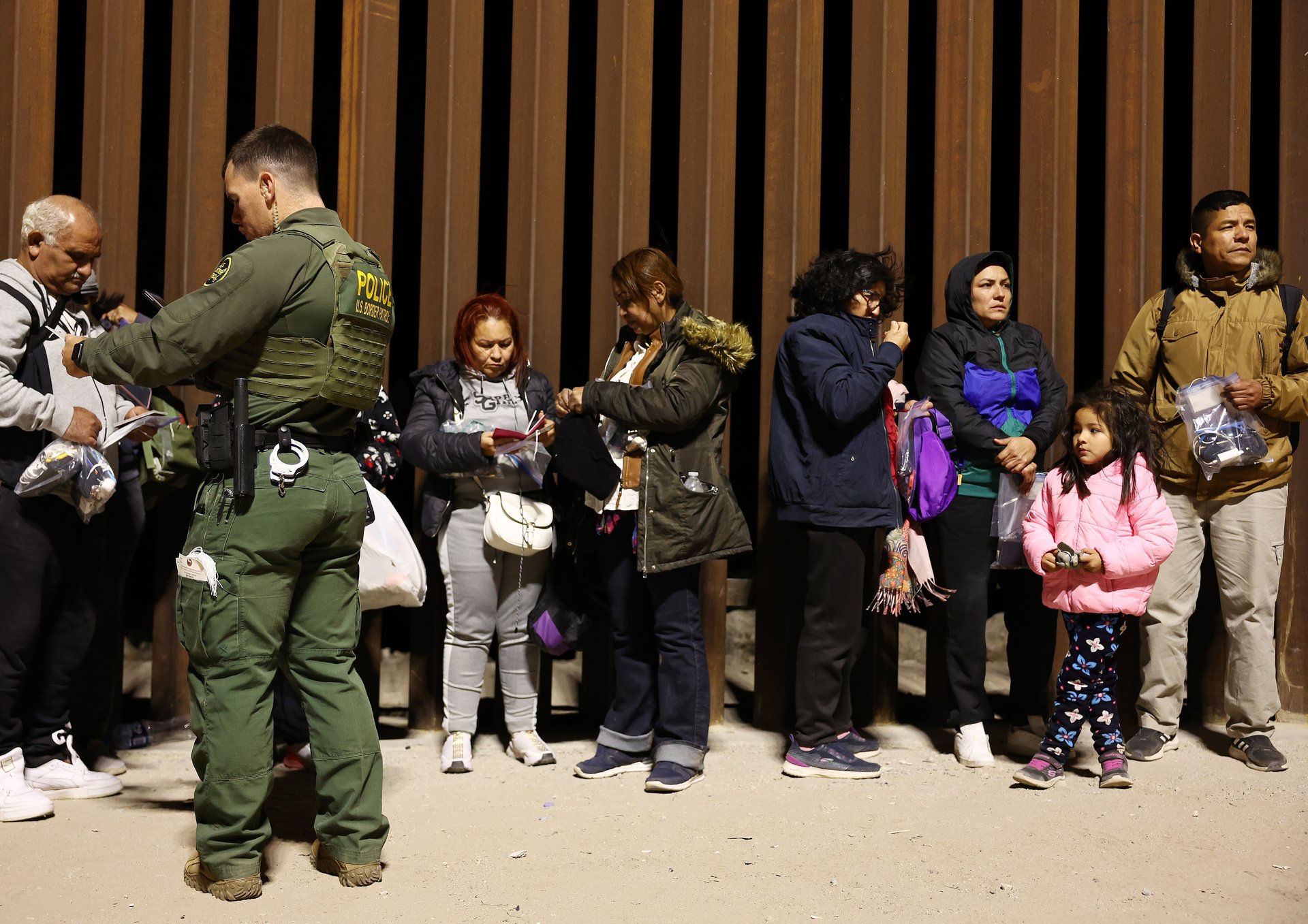The Biden administration is preparing for the end of Title 42
The controversial Trump-era immigration policy rolls back on May 11

A controversial immigration policy—Title 42—is finally set to be lifted three years after it was implemented as the Biden administration prepares to roll out a new immigration policy.
Suggested Reading
The Trump-era public health order, which expires Thursday (May 11), was passed during the covid pandemic to restrict immigration from both Canada and Mexico. It granted authorities the power to rapidly expel migrants and asylum seekers at the borders on the premise that it would prevent the spread of disease.
Related Content
The policy immediately faced pushback from civil rights groups and disease experts, who argued the measure was illegal and unjustified on public health grounds.
About 2.8 million migrants were expelled under the policy, according to data from US Customs and Border Control.
Now that the policy is rolling back, the Biden administration plans to rely on a set of new and old immigration policies to fill the gap. It has also deployed an additional 1,500 troops to the US-Mexico border, along with more asylum officers and medics.
“It’s going to be chaotic for a while,” president Joe Biden conceded in a statement on Tuesday (May 9) to Congressional leaders.
The history, and legal battles, behind Title 42
Title 42 gets its name from the its namesake clause of the 1944 Public Health Act, which gives the federal government the authority to block peoples’ entry into the US to prevent the spread of communicable disease. It was invoked under the Trump administration in March 2020, the early days of the pandemic.
President Biden supported the policy when he entered office in January 2021 and kept endorsing it for over a year, claiming it prevented covid outbreaks. In April 2022, the Centers for Disease Control and Prevention (CDC) called for an end to the order citing an improvement in the pandemic. But 19 Republican-led states filed appeals attempting to delay the end of Title 42.
In November, a federal judge found Title 42 to be illegal and ordered its cancellation. The Biden administration appealed the decision, while the same coalition of GOP states issued a petition that was approved by the Supreme Court, allowing for the policy to continue pending further arguments.
Ultimately, the Supreme Court canceled the opportunity to present arguments in the case as Biden administration’s end of the public health emergency renders Title 42 moot.
A non-exhaustive list of the Biden administration’s immigration plans once Title 42 ends
8️⃣ The Department of Homeland Security (DHS) will process all migrants under Title 8. The section of US code covers immigration and nationality, and was used before the pandemic.
⏩ The administration will increase its use of “expedited removal” on those who try to cross the US border without permission that would result to a five-year ban on reentering the country.
📱All asylum seekers will have to apply for entry through the CBP One phone app, with a cap of around 1,000 appointments per day.
🗺️ Migrants who have passed through other countries and not sought asylum in those locations first may be ineligible to seek asylum in the US. The policy that has been widely criticized as resembling the Trump-era “transit ban.” Litigation from legal advocacy groups is likely incoming.
🛂 The US is opening immigration processing centers in Central and South America in an effort to increase legal pathways for migration and reduce the number of asylum seekers at the border. The centers will have the capacity to review about 5,000 to 6,000 applicants each month.
🇲🇽Mexico will accept migrants turned away at the US border from Cuba, Haiti, Nicaragua, and Venezuela as part of a new agreement, as well as 100,000 citizens of Honduras, Guatemala, and El Salvador who have family in the US.
👪 The US will continue to accept 30,000 citizens each month from Cuba, Haiti, Nicaragua, and Venezuela under its humanitarian parole program. The program is currently being challenged in court by Republican-led states. A trial date is set for June.
Related stories
🗣️ Public comments to the proposed increases in US visa fees show staunch opposition and concerns